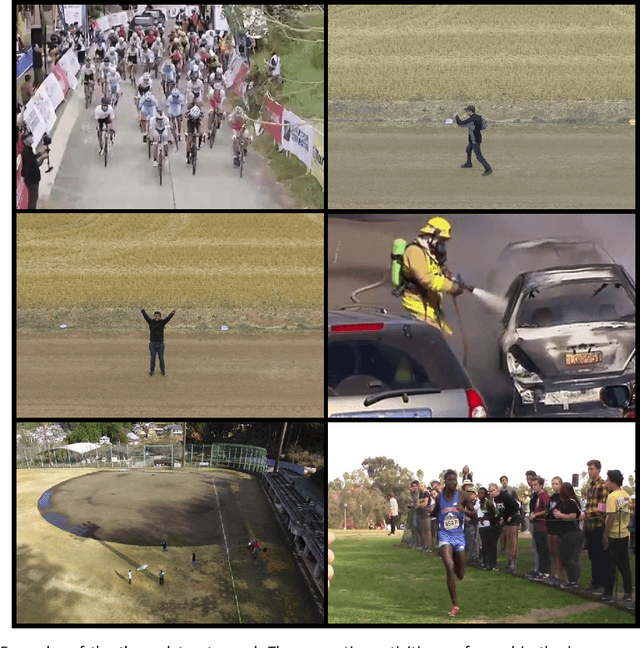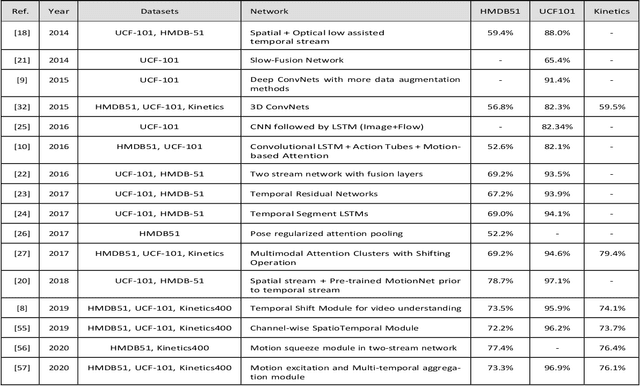Heena Rathore
University of Texas
Advancing Perception in Artificial Intelligence through Principles of Cognitive Science
Oct 13, 2023Abstract:Although artificial intelligence (AI) has achieved many feats at a rapid pace, there still exist open problems and fundamental shortcomings related to performance and resource efficiency. Since AI researchers benchmark a significant proportion of performance standards through human intelligence, cognitive sciences-inspired AI is a promising domain of research. Studying cognitive science can provide a fresh perspective to building fundamental blocks in AI research, which can lead to improved performance and efficiency. In this review paper, we focus on the cognitive functions of perception, which is the process of taking signals from one's surroundings as input, and processing them to understand the environment. Particularly, we study and compare its various processes through the lens of both cognitive sciences and AI. Through this study, we review all current major theories from various sub-disciplines of cognitive science (specifically neuroscience, psychology and linguistics), and draw parallels with theories and techniques from current practices in AI. We, hence, present a detailed collection of methods in AI for researchers to build AI systems inspired by cognitive science. Further, through the process of reviewing the state of cognitive-inspired AI, we point out many gaps in the current state of AI (with respect to the performance of the human brain), and hence present potential directions for researchers to develop better perception systems in AI.
Novel Reinforcement Learning Algorithm for Suppressing Synchronization in Closed Loop Deep Brain Stimulators
Dec 30, 2022



Abstract:Parkinson's disease is marked by altered and increased firing characteristics of pathological oscillations in the brain. In other words, it causes abnormal synchronous oscillations and suppression during neurological processing. In order to examine and regulate the synchronization and pathological oscillations in motor circuits, deep brain stimulators (DBS) are used. Although machine learning methods have been applied for the investigation of suppression, these models require large amounts of training data and computational power, both of which pose challenges to resource-constrained DBS. This research proposes a novel reinforcement learning (RL) framework for suppressing the synchronization in neuronal activity during episodes of neurological disorders with less power consumption. The proposed RL algorithm comprises an ensemble of a temporal representation of stimuli and a twin-delayed deep deterministic (TD3) policy gradient algorithm. We quantify the stability of the proposed framework to noise and reduced synchrony using RL for three pathological signaling regimes: regular, chaotic, and bursting, and further eliminate the undesirable oscillations. Furthermore, metrics such as evaluation rewards, energy supplied to the ensemble, and the mean point of convergence were used and compared to other RL algorithms, specifically the Advantage actor critic (A2C), the Actor critic with Kronecker-featured trust region (ACKTR), and the Proximal policy optimization (PPO).
DroneAttention: Sparse Weighted Temporal Attention for Drone-Camera Based Activity Recognition
Dec 07, 2022



Abstract:Human activity recognition (HAR) using drone-mounted cameras has attracted considerable interest from the computer vision research community in recent years. A robust and efficient HAR system has a pivotal role in fields like video surveillance, crowd behavior analysis, sports analysis, and human-computer interaction. What makes it challenging are the complex poses, understanding different viewpoints, and the environmental scenarios where the action is taking place. To address such complexities, in this paper, we propose a novel Sparse Weighted Temporal Attention (SWTA) module to utilize sparsely sampled video frames for obtaining global weighted temporal attention. The proposed SWTA is comprised of two parts. First, temporal segment network that sparsely samples a given set of frames. Second, weighted temporal attention, which incorporates a fusion of attention maps derived from optical flow, with raw RGB images. This is followed by a basenet network, which comprises a convolutional neural network (CNN) module along with fully connected layers that provide us with activity recognition. The SWTA network can be used as a plug-in module to the existing deep CNN architectures, for optimizing them to learn temporal information by eliminating the need for a separate temporal stream. It has been evaluated on three publicly available benchmark datasets, namely Okutama, MOD20, and Drone-Action. The proposed model has received an accuracy of 72.76%, 92.56%, and 78.86% on the respective datasets thereby surpassing the previous state-of-the-art performances by a margin of 25.26%, 18.56%, and 2.94%, respectively.
Power Systems Transient Stability Indices: Hierarchical Clustering Based Detection of Coherent Groups Of Generators
Feb 26, 2021



Abstract:Coherent groups of generators, i.e., machines with perfectly correlated rotor angles, play an important role in power system stability analysis. This paper introduces a real-time methodology based on hierarchical clustering techniques for discovering the degree of coherency among generators using the synchronization coefficient and the correlation coefficient of the generators' rotor angle as the coherency index. Furthermore, the Power Transient Stability Indices (PTSI) were employed to examine the versatile response of the power system. The method uses power systems transients Stability indices, i.e., power Connectivity Factor (CF) index which presents coherently strong generators within the groups, the power Separation Factor (SF) index which unveils to the extent that the generators in different groups tend to swing against the other groups in the event of a disturbance, and the overall system separation index which demonstrates the overall system separation status (CF/SF). The approach is assessed on an IEEE-39 test system with a fully dynamic model. The simulation results presented in this paper demonstrate the efficiency of the proposed approach.
 Add to Chrome
Add to Chrome Add to Firefox
Add to Firefox Add to Edge
Add to Edge